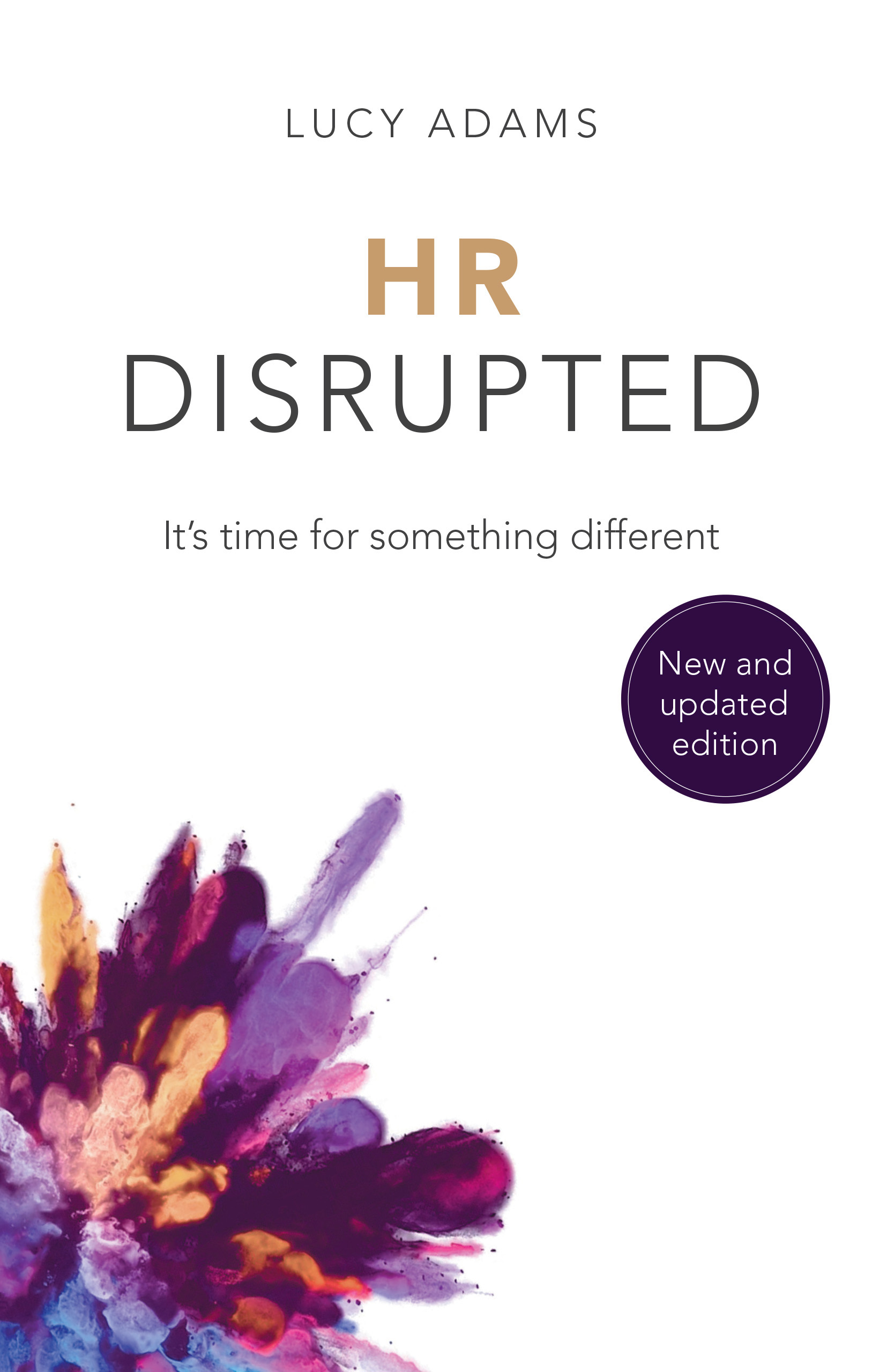Having been in the HR world for more than 25 years, I believed what we did was what companies required to achieve the best employee culture and engagement.
Then I read HR Disrupted.
This showed me a completely different way of thinking – especially questioning why current HR practices are no longer working.
I really enjoyed the way Lucy Adams described why processes aren’t working and what we need to do to reinvent human resources as we know it. Not only describing the re-evaluation of how HR works, but also adding the pandemic in the mix and how the businesses have been affected people-wise. It’s amazing how technology has changed drastically in the past few years and although, in my experience, I believe to be somewhat tech-savvy, it’s astonishing to think how so far behind we actually are.
The analogy of parent/child made me reflect on how true this is… how do we get away from this unhealthy relationship? Throughout the book, Lucy talks about instilling trust and showing employees how to think differently and take responsibility for their own careers. Lucy explains: “by treating employees like adults we can increase productivity as they will feel more motivated and freer to challenge the way things are done.”
Lucy then goes on to review the various proven models that work best when dealing with employees. For example, the “SCARF” model (Status, Certainty, Autonomy, Relatedness, Fairness) where if employees are rewarded with these elements, the part of the brain which controls learning, creativity, problem solving, and lateral thinking is opened up. Employees are then freed to work more effectively. Dan Pink’s motivation model was also particularly interesting, where people are intrinsically motivated and question whether money is actually the biggest driver.
Lucy describes several processes in their current state and how we can reinvent them. Some of the ones she explores and provides ideas on reinventing are:
- Recruitment – develop employer brand; promote vacancies with a creative flair; focus on personal qualities rather than skills and experience
- Employment rules and policies – write all your rules and policies from a position of trust; when the employee messes up, deal with him/her and not the rule book
- Performance – give continuous, context-based feedback; make it easy for managers to give feedback through a range of personalized options; where conversations are about the conversation not the grade; eliminate the grading altogether
The whole concept of talent management is not helping employees move forward and grow. There has to be a responsibility on their part as much as the responsibility on the managers and HR. It’s all about the environment that is created to provide employees the option to not only move upward but also sideways and even downwards.
So now what? Where does this leave HR?
Lucy goes through creative ideas to help HR move forward and begin changing the way they work. If a process doesn’t work don’t just create another one, HR must do a deep dive to see what is not working and change what should be changed. Checking in regularly with yourself, and encouraging your team to do the same, will ensure old habits. Instead, they shouldn’t derail the innovation and freshness of their original plans. Some of her thoughts of transformation include the importance of building a case with qualitative and quantitative data. HR has always been tasked with providing data, make sure you have what you need to prove your point; also make sure you are addressing the organization’s main business problem. Your leaders must be on board with the thoughts behind your plans; try piloting your changes with some end users to test it out, don’t forget to build in regular check-ins, and always build the capabilities of your leaders.
Lucy summarizes her thoughts by explaining the six trends to follow in HR organizational design:
- Moving from business partners to account managers
- Moving HR advisory from transactional to helpful
- Moving centres of expertise to centres of employee experience
- Moving from compliance to capability
- Moving from permanent to contingent HR staff
- Moving from business-as-usual to R&D
What are the needs of the future? This book is a must read for those HR leaders that want more out of their careers and don’t want to sit back and accept indifference. Nothing is usual anymore, therefore we need to take action to prove our worth. We need to be the go-to experts for everything involving human beings in an organization. So, for those that are serious this book is your first step towards the future in HR.
Published by Practical Inspiration Publishing
Monique Vander Eyken, HR Consultant – MVE Consulting







